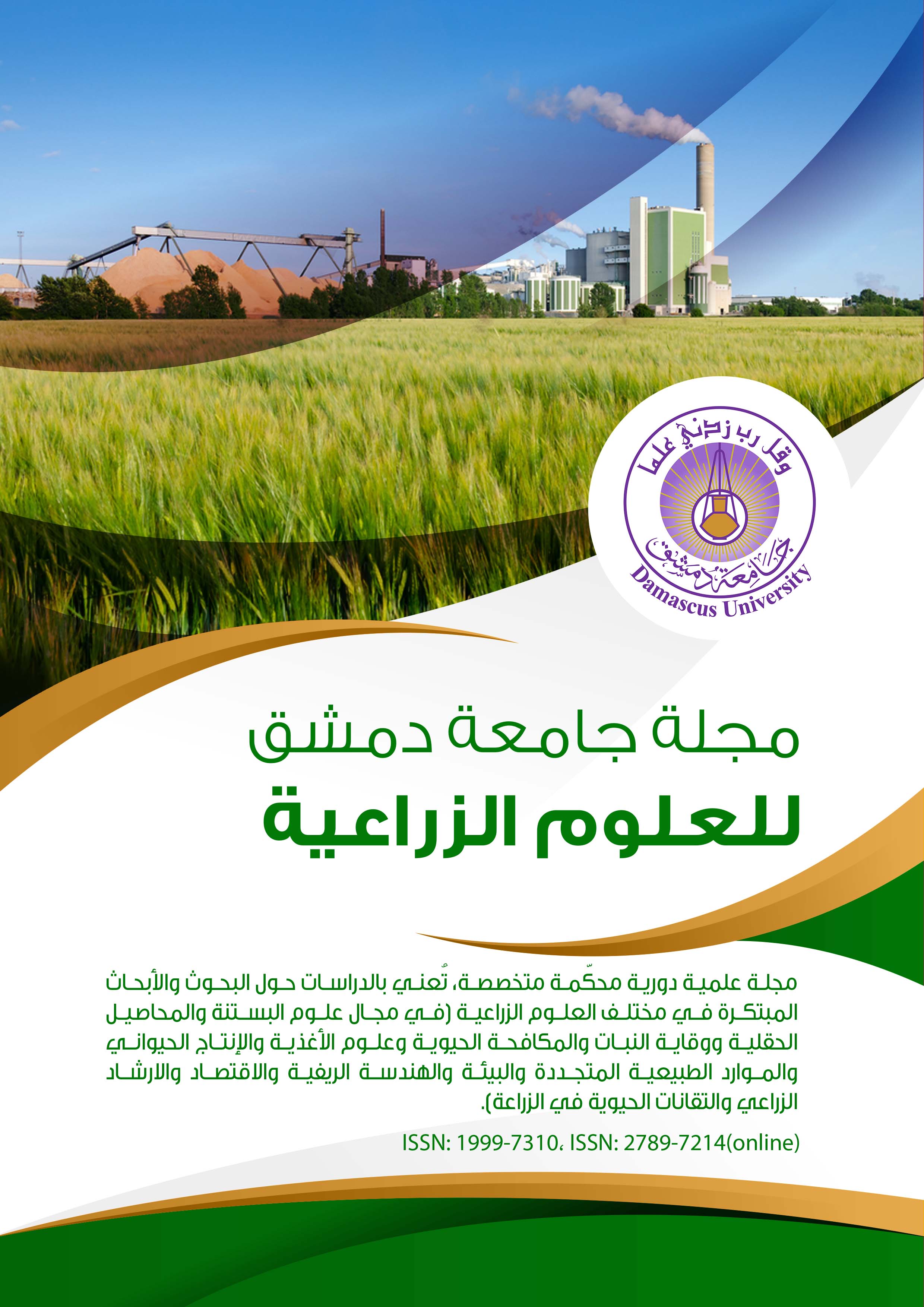Study of the chemical composition and content of bioactive compounds of local wild hawthorn
Keywords:
hawthorn, chemical structure, antioxidants, vitamin C, total phenols, flavonoids, DPPHAbstract
This research was carried out at the laboratories of the Department of Food Sciences - Faculty of Agriculture - Damascus University and the laboratories of the General Authority for Biotechnology in 2021 with the aim of studying the physical characteristics and chemical composition of three types of wild hawthorn grown in Syria (large yellow hawthorn C. pubescens, small yellow hawthorn C. monogyna, and red hawthorn C. azarolus), and determining their content of biologically active compounds. The weight of the large yellow hawthorn fruits was significantly higher compared to the rest of the species, reaching 13.93 g. The results showed that all studied hawthorn species were rich in ash (ranging between 1.68 and 2.82% of fresh weight) and fiber (ranging between 8.16 and 9.54% on wet matter basis). All studied hawthorn species were characterized by their high content of total acids (1.16 - 1.59% malic acid on wet matter basis), and low content of total fats and protein. The red hawthorn with its content of total phenols and anthocyanins was superior to the rest of the studied species (90 mg Gallic acid equivalent / 100 g, 8.37 mg / 100 g on wet matter basis) respectively, while the small yellow hawthorn was superior to the rest of the types of hawthorn in terms of its content of flavonoids (36.00 mg quercetin/100 g of
fresh weight). Red hawthorn fruits recorded the highest percentage of antioxidant activity, followed by small yellow hawthorn fruits (88.63% and 75.41%), respectively.

